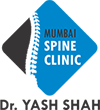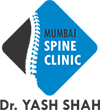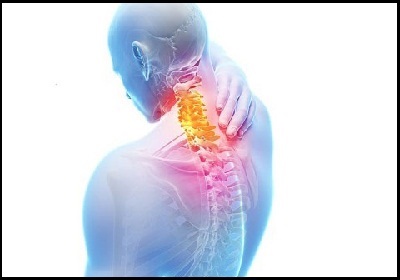Spinal Infection
Spinal infections are rare infections that can involve the
intervertebral disc space, the vertebral bones, the spinal canal, or adjacent soft tissues. Discitis refers to an infection of the intervertebral disc in the spine. Osteomyelitis refers to an infection of the vertebral bones in the spine. Infection may be caused by bacteria or fungal organisms, viruses, or can occur after a spinal procedure or surgery.
Generally, infections are bacterial and spread to the spine through the bloodstream. Bacteria may spread through the bloodstream into the vertebral discs and affect this area causing discitis. As the infection progresses, the disc space degenerates. As the disc decays, the infection may spread into the vertebral bodies above and below the disc called osteomyelitis. The bone, weakened by infection may also begin to collapse or crumble causing spinal deformity. In some cases the infection or crumbling bones may push into the area for the nerves or spinal cord which may cause neurologic symptoms including numbness, weakness, tingling, pain, or bowel or bladder dysfunction.
If you are finding best treatment, Dr. Yash Shah offers comprehensive treatment for spinal infections in Kandivali, Mumbai. Also offers non-surgical treatments for spinal infections. Consult Now!
CAUSES
Conditions that weaken the immune system may predispose patients to spinal infection. These conditions include: diabetes mellitus, use of immunosuppressant medications cancer, malnutrition, history of organ transplant, and use of intravenous drug abuse. The most common organism in spinal infection is from the bacteria Staphylococcus aureus which typically exists on human skin, followed by Escherichia coli. Most spine infections occur in the lumbar spine because of the blood supply to this region of the spine. This may be seeded from a pelvic infection, urinary or bladder infection, pneumonia, or a soft-tissue infection. Infections associated with intravenous drug abuse are more likely to involve the neck or cervical spine. Infection from tuberculosis is rare in North America but when present is most commonly found in the thoracic spine.
SYMPTOMS
Unfortunately, spinal infections in adults have a slow, insidious onset with minimal symptoms which may delay diagnosis. Some patients experience symptoms for a number of weeks or months prior to being diagnosed. Symptoms often start with localized tenderness to the neck or back; pain is worsened with movement without relief from traditional rest and medications. Symptoms from overall infection may include fevers, chills, night pain, or unexplained weight loss however these are not common especially in chronically ill patients. Patients eventually develop severe back pain with limited movement. Although rare, discitis can also occur following spinal surgery. In postoperative patients, symptoms usually begin days to weeks after surgery. If spinal infection is suspected, laboratory evaluation and radiographic imaging studies are necessary.
DIAGNOSIS
Diagnosing a spinal infection usually starts with an x-ray. However, x-rays are usually normal in the first two to four weeks after an infection begins. Additional imaging studies including an MRI scan with enhancement of gadolinium intravenous dye is important in the diagnosis. This also allows visualization of the neurologic structures that may be affected. Laboratory studies should be obtained. Inflammatory markers may be helpful; these are not elevated with other non-infectious spine pathology. Blood cultures may help identify the organism causing infection; however, blood cultures are positive in less than half of all cases. For some patients, a needle biopsy or open surgery is necessary to obtain cultures so appropriate antibiotics can stop the offending organism.
TREATMENT
Treatment for most spinal infections includes a combination of intravenous antibiotic medications, bracing, and rest. Vertebral discs do not have a good blood supply so when bacteria is present, the body's immune cells as well as antibiotic medications have difficulty reaching the infection site. IV antibiotic treatment is usually required for six to eight weeks. Bracing may be recommended to improve stability of the spine while the infection heals. Surgical treatment is necessary if the infection cannot be controlled with antibiotics and bracing or if there is nerve compression. Surgery is used to treat the infection and improve pain, prevent worsening of spinal deformity, and relieve any neurologic compression. As treatment progresses, repeat blood tests and x-rays are required to verify the infection is responding to treatment. All patients with suspected spinal infection should seek treatment. Patients with symptoms of neurologic compromise should seek emergent evaluation.


